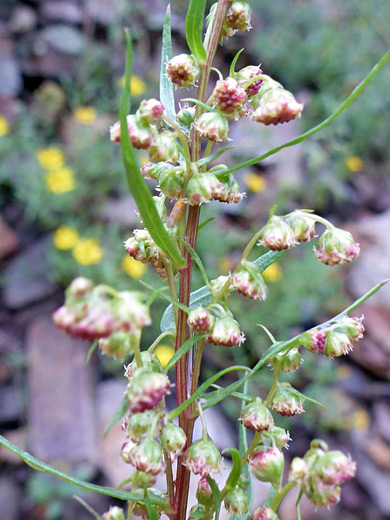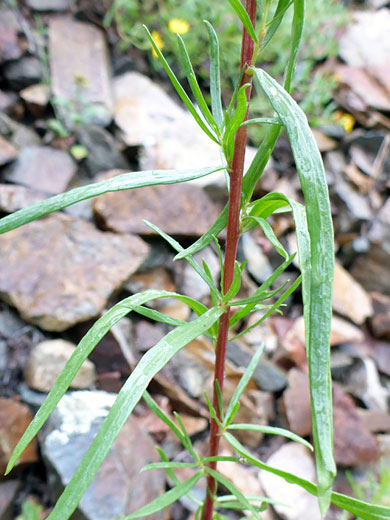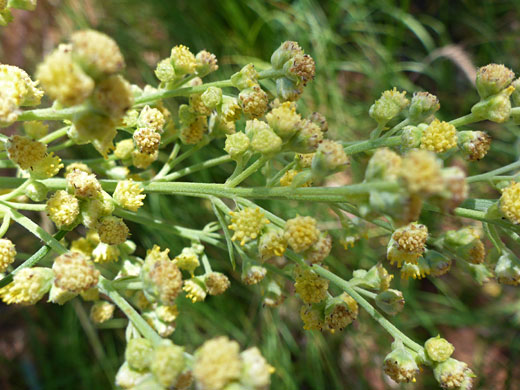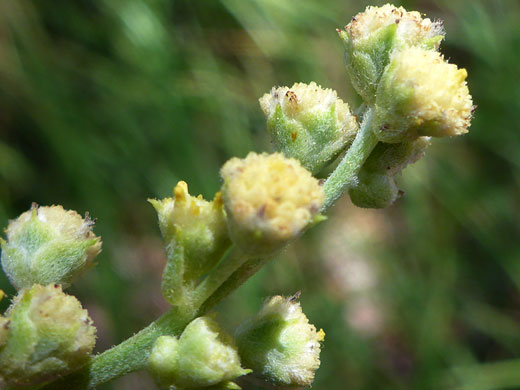
Nodding flowerheads of artemisia dracunculus along the Arrastra Basin Trail, San Juan Mountains, Colorado
Common names:
Wild tarragon, dragon wormwood
Family:
Scientific name:
Artemisia dracunculus
Main flower color:
Range:
All the western states
Height:
Up to 4 feet
Habitat:
Roadsides, fields, meadows, canyons; 2,000 to 10,000 feet
Leaves:
Linear to narrowly lanceolate, up to 3 inches long
Season:
June to October
A cultivated variety of artemisia dracunculus, wild tarragon, is widely used for cooking and herbal medicine on account of its fragrant leaves. Unlike many other sagebrush species, all parts are usually hairless, though the narrow, bright green (sometimes greyish-green), pointed-tipped leaves may have a sparse hair covering. The leaves are up to 3 inches long but less than a quarter of an inch wide. Leaves are generally unlobed. Stems are reddish-brown, less often green. Plants form clumps, often with dozens of stems growing close together.
Flowerheads are produced in elongated clusters at the top of the stem and at the upper leaf nodes, subtended by leafy bracts. Heads are often nodding, angled downwards. The involucre is hemispherical, lined by brown or greenish phyllaries. The small yellow disc florets are either staminate (numbering eight to 20), or pistillate (six to 25). They become red then brown as they wither.
Flowerheads are produced in elongated clusters at the top of the stem and at the upper leaf nodes, subtended by leafy bracts. Heads are often nodding, angled downwards. The involucre is hemispherical, lined by brown or greenish phyllaries. The small yellow disc florets are either staminate (numbering eight to 20), or pistillate (six to 25). They become red then brown as they wither.
All Contents © Copyright The American Southwest | Comments and Questions | Contribute | Site Map



